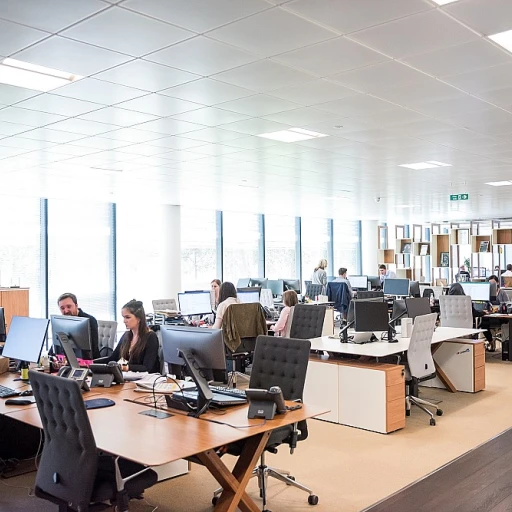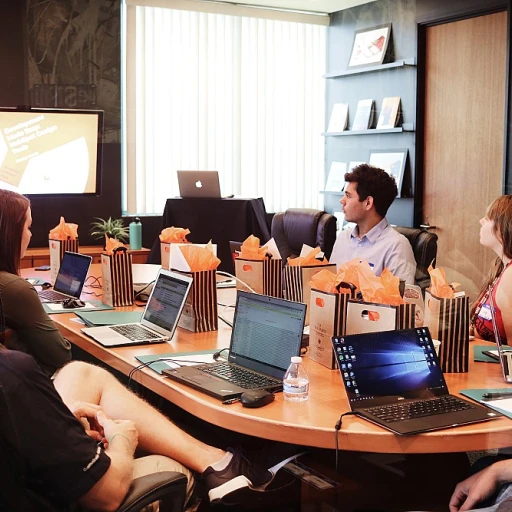
Understanding the Growth Mindset
Cultivating a Culture of Growth and Innovation
To foster innovation within an organization, it is crucial to understand the essence of a growth mindset. This concept, popularized by psychological research, focuses on the belief that talents and abilities can be developed through dedication and hard work. It contrasts with a fixed mindset where skills are seen as static and unchangeable. A growth mindset encourages leaders and teams to embrace challenges as opportunities for growth rather than as threats. This is where leadership plays a pivotal role. By promoting a mindset culture that values continuous learning and improvement, employees are motivated to push past limits and develop their skills. Organizations that successfully integrate a growth-oriented approach often see quick adaptability to change. Encouraging team members to learn from feedback instead of fearing criticism leads to innovation-driven cultures. An environment supportive of problem-solving and creativity emerges, paving the way for long-term success and development. In order to create such an environment, it's important to combine learning development with real-world applications, ensuring team members are not only encouraged but equipped with the necessary tools to innovate. For more insights on implementing these strategies, read our detailed article on maximizing ABM application in CHRO strategy. Cultivating a culture of growth does not happen overnight. It requires consistent effort from leadership to reinforce these values and provide the necessary support to all employees. The influence of mindset innovation in organizations can often determine its competitive edge in the market. By embedding these principles within the organization, leaders can challenge the status quo and drive significant transformations.Role of CHROs in Cultivating Innovation
Navigating the Waters of Leadership and Innovation
For organizations aiming to foster a culture of growth and innovation, Chief Human Resources Officers (CHROs) play a vital role. They are instrumental in guiding their organizations through strategic alignments, ensuring that the mindset of growth permeates every level. The leadership provided by CHROs helps prepare employees and teams to embrace change and tackle challenges with innovative problem-solving skills.
Creating an environment conducive to a growth mindset requires a dedication to continuous learning and development. CHROs must advocate for learning opportunities that equip team members with the necessary skills to thrive in a culture of innovation. Emphasizing a shift from a fixed mindset to a growth-oriented approach involves instilling values of hard work and resilience. They have to encourage employees to engage in learning experiences and feedback cycles, thereby promoting continuous improvement.
The influence of CHROs extends further as they work towards developing a culture that welcomes change and champions a mindset of innovation. Cultivating such an environment calls for determination and a strategic framework where learning, development programs, and leadership align effortlessly. CHROs should ensure that both organizational leaders and employees are committed to the long-term objectives of growth innovation, helping steer the organization towards future success.
Moreover, CHROs must focus on integrating design thinking and other modern approaches into their strategy. This will not only create an environment that supports growth but also encourages employees to contribute actively to the organization’s vision. Encouraging mindset leaders within teams to champion these initiatives can further solidify a mindset culture centered on achieving significant impactful results.
Organizations must be proactive in navigating strategic realignment within their CHRO strategy to harness the full potential of a growth mindset. This involves understanding the nuances of mindset culture and implementing plans that facilitate organizational learning navigating strategic realignment.
Building a Supportive Environment
Creating a Nurturing Ecosystem for New Ideas
In order to successfully foster innovation within an organization, it is crucial for leaders to create an environment where employees feel encouraged and supported to express their ideas. A supportive environment not only enhances a growth mindset culture but also lays the foundation for continuous learning and improvement. Here are some key components to consider:- Encouraging Open Communication: Leaders should establish clear channels for communication where team members can provide feedback and express their ideas without fear of retribution. This open dialogue inspires collaboration and enhances problem solving capabilities.
- Facilitating Cross-Functional Teams: By promoting diverse teams, organizations can bring together a variety of perspectives and experiences, which is essential for cultivating new ideas. Mixing different skills and backgrounds can ignite creative thinking and drive the organization towards innovative solutions.
- Promoting Continuous Learning: A culture that values learning and development is instrumental in supporting a growth mindset. Providing opportunities for employees to learn new skills not only benefits them personally but also contributes to the organization's innovative capabilities.
- Recognizing and Rewarding Efforts: Recognition of hard work and innovative efforts can motivate employees to continue contributing fresh ideas. Leadership can implement reward systems that highlight and celebrate successes, fostering a sense of value and belonging.
Training and Development Programs
Customized Training Solutions for Growth and Innovation
To imbue an organization with a growth mindset, leaders must prioritize the creation of robust training and development programs that propel both individual and organizational advancement. These programs should be intricately designed to foster continuous learning and inspire innovation across all levels of the organization.- Emphasizing Growth Over Fixed Mindsets: Training initiatives should begin by addressing the fundamental distinction between a growth mindset and a fixed mindset. Encouraging employees to embrace challenges and learn from feedback is crucial for developing growth and fostering a mindset culture that favors innovation.
- Personalized Learning Paths: Understanding that each team member possesses unique skills and learning styles, offering personalized learning and development opportunities can significantly boost engagement and long-term growth. This approach supports continuous improvement and helps in honing problem-solving abilities.
- Cultivating Leadership Skills: Leadership training should focus on nurturing mindset leaders who are equipped with the skills necessary to guide their teams through change and instill a culture of continuous learning. Team leaders play a pivotal role in shaping a growth-oriented environment.
- Incorporating Design Thinking: When organizations integrate design thinking concepts into their training programs, it empowers employees and teams to approach problem-solving creatively. This fosters an innovation mindset that can drive culture innovation.
- Harnessing Feedback Mechanisms: Effective training programs include real-time feedback mechanisms that encourage employees to learn and adapt. This focus on active learning development is essential in maintaining a thriving innovation culture.
Measuring Success and Impact
Evaluating the Impact of Growth-Oriented Strategies
In the realm of fostering innovation within an organization, measuring success and impact is crucial. It ensures that the strategies implemented are not only effective but also sustainable in the long term. For CHROs, this involves a multi-faceted approach that considers both quantitative and qualitative metrics.
Key Performance Indicators (KPIs)
To effectively measure the success of a growth mindset strategy, organizations need to establish clear KPIs. These indicators should reflect the organization's goals and the specific outcomes expected from fostering a mindset culture. Common KPIs include:
- Employee Engagement: Tracking engagement levels can provide insights into how well employees are adapting to a growth-oriented culture.
- Innovation Metrics: The number of new ideas generated, projects initiated, and patents filed can serve as indicators of an innovation mindset.
- Learning and Development: Participation rates in continuous learning programs and the acquisition of new skills are vital metrics.
- Feedback Mechanisms: Regular feedback from team members can help assess the effectiveness of leadership in promoting a growth mindset.
Qualitative Assessments
Beyond numbers, qualitative assessments provide a deeper understanding of the cultural shifts within the organization. Conducting interviews and surveys with employees and leaders can reveal insights into the challenges and successes experienced during the implementation of growth strategies. These assessments help in identifying areas for continuous improvement and in reinforcing the commitment to a growth mindset.
Long-Term Impact
While immediate results are important, the true success of a growth mindset strategy lies in its long-term impact. Organizations should evaluate how these strategies influence business outcomes over time, such as increased market share, improved customer satisfaction, and enhanced problem-solving capabilities. By focusing on both short-term wins and long-term goals, CHROs can ensure that the culture of innovation becomes deeply embedded within the organization.
Ultimately, measuring success in fostering a growth mindset requires a holistic approach that balances quantitative data with qualitative insights. By doing so, organizations can create an environment where innovation thrives, and employees are empowered to learn, adapt, and grow.













